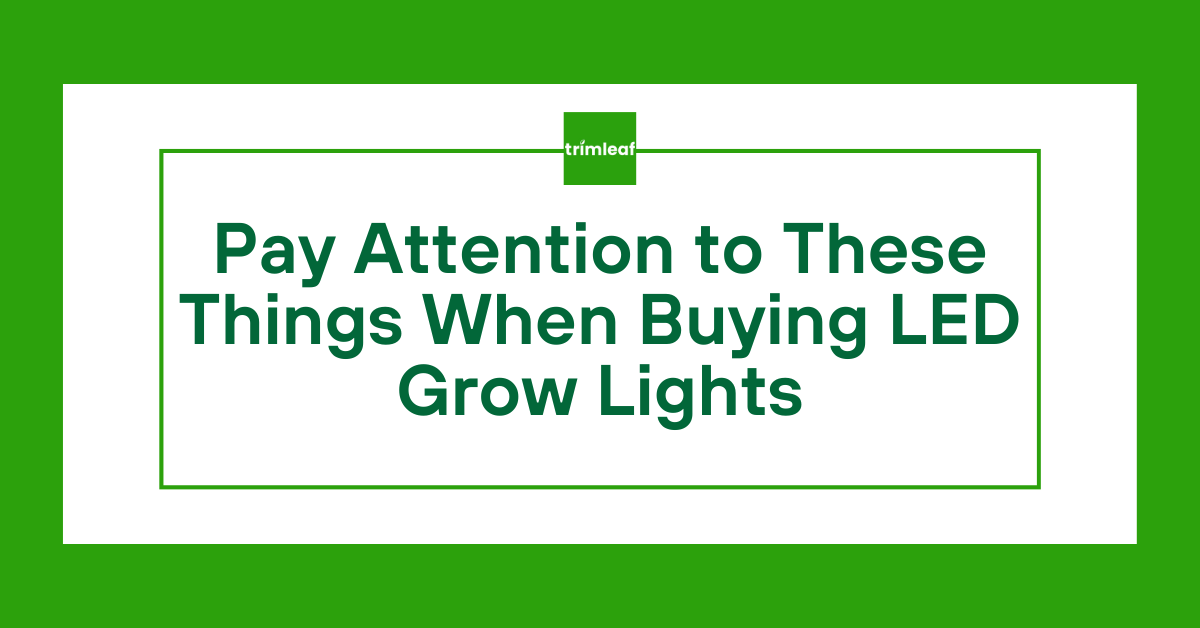
Light Output
Some LED grow light manufacturers may publish inaccurate PPF and PAR ratings, affecting how your plants respond to the light. In some cases, grow lights only put out a single PAR rating, which is only a measurement in the middle of the grow light’s footprint. Unfortunately, this doesn’t represent the whole grow light, as you also need to consider the surrounding areas.
Aside from buying from a reputable brand, it would be best to consider looking at independent lab reports that test these grow lights. Often, these tests are published on the product page of an LED grow light. You can use this as a guide to check for the accuracy of the information published on a product page.
You can compute the average PPFD of the grow light from the PAR readings published in these reports. The average PPFD should show you how much light you get with the grow light.
Grow Light Wattage
The wattage of the grow light matters since you’re looking at consuming less while getting more. Remember, that’s the whole point of going for LED grow lights because you want to save in power consumption.
Now, there’s often a five percent discrepancy between the wattage published. Knowing the actual wattage matters because that will translate to power consumption and heat emissions in your grow space.
The good news here is that independent labs report the wattage of a grow light and at what voltage a grow light is tested. The voltage matters because running a grow light with a slightly higher voltage will result in lower wattage.
Diodes Used
While not common, some companies use higher-quality diodes for the test unit and switch to a lower-quality LED array. This deception can lead to inaccurate results, which can affect the growth of your plants.
Buying from a reputable company or dealer is the best way to prevent this. You can also ask for the lab report conducted independently to ensure you get the suitable LEDs in your grow light. Compare the lab results with what the manufacturer publishes for the product specifications.
Diode and Driver Lifespan
The LEDs in a grow light have a lifespan of 50,000 – 100,000 hours. However, the drivers of these grow lights tend to have a shorter lifespan. If you’re buying an LED, grow light, look for one that uses an external driver so that you can move around to ensure air circulation. Preventing it from overheating is the first thing you must consider to ensure its longevity.
But at some point, the drivers are bound to fail. Now, drivers are easy to replace. But before you fork out some money to buy a replacement driver, consider going over the warranty coverage of your drivers. You might be qualified for a repair or even a replacement.
Warranty Length
Sometimes you end up with a lemon or a defective product. While many LED Grow Light brands do their best to ensure quality control, there are instances that a defect may happen after the inspection, such as in transit to your shipping address or, worse, during use.
Always check the product description for warranty information. It’s a standard operating procedure to publish the warranty information of the grow lights on this site to ensure confidence among buyers.
Sometimes, two sets of warranty coverage will cover a particular part of the grow light. It’s best to verify this information, so you know what is covered. Remember to note the date the grow lights arrived, which starts the warranty coverage. If there’s a replacement guarantee, take advantage of it, especially if the defect arises during the replacement period.
Which Brands Can You Rely On?
The good news is that you can rely on plenty of brands to produce accurate results that match independent lab reports.
Here are some brands to consider if you want to buy an LED grow light. Note that these are just some of the reliable brands available today. You can check our selection of grow lights for other options based on the abovementioned criteria.
HLG
The Horticulture Lighting Group (HLG) is a leading LED grow light manufacturer based in East Tennessee. It’s known for its quantum boards, which are known for using low-wattage diodes, resulting in electricity savings.
One notable LED grow light you should check under this brand is the HLG Scorpion Diablo. It features six (6) QB648 Diablo Quantum Boards, providing a broader light spread even when hanging only 12 inches from the canopy. At its lowest height, the Scorpion Diablo can deliver a PPFD of 2130 umol/s.
Medic Grow
Medic Grow is a US-based company that holds its inventory in California. With over ten years of experience, Medic Grow offers LED grow lights for different footprints and form factors, which comes in handy if you need a primary or supplementary grow light.
One of Medic Grow’s notable LED grow lights is the Fold-8. This grow light runs at 720 watts and has a remarkable PPFD of 1385 umol/s at 12 inches from the canopy.
MIGRO
The Migro grow lights take pride in their modular design. While not entirely a new concept, the modular design they developed is one of the easiest to expand when you decide to cover larger footprints. Migro, which is part of PARTECH LED, is based in Dublin, Ireland.
The ARAY is the flagship grow light of Migro. This modular grow light is based on a pair of bar LED grow lights. Ordering higher models will give you a more extensive set of LED bars. Each LED bar uses Samsung LM281B diodes and Meanwell drivers. The base model, the ARAY2, has a PPDF of 800 umol/S and uses only 125 watts of power.
Conclusion
The truth is, getting the most value in buying LED grow lights can be simple. You don’t need to do the tests yourselves to see if the grow lights meet the specifications published by the manufacturer. Your best option is always to buy from a reputable brand and dealer. Aside from verifying through independent light tests, you should also check what others say about the grow lights you’re eyeing. Once you decide which LED grow light you need, you know where to go next.







